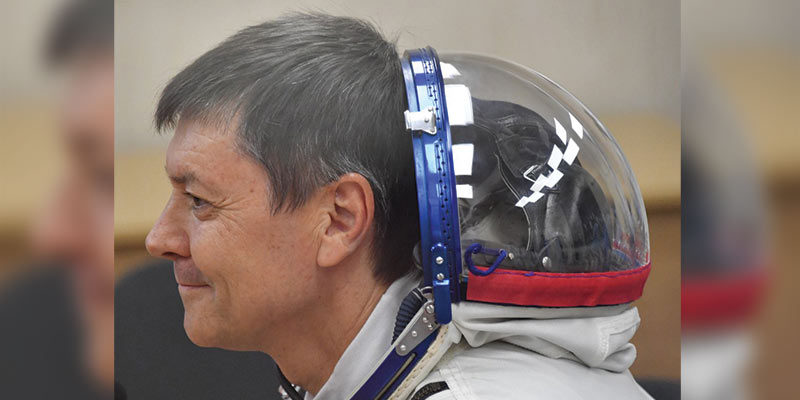- World
- Jun 06
Oleg Kononenko becomes the first person to spend 1,000 days in space
• Russian cosmonaut Oleg Kononenko has become the first person to spend 1,000 days in space.
• The 59-year-old achieved the milestone on June 4, having made five journeys to the International Space Station dating back to 2008.
• His current trip to the ISS began on September 15, 2023, alongside NASA astronaut Loral O’Hara and compatriot Nikolai Chub.
• Kononenko first took the cumulative space time record in February 2024, when he surpassed the total of 878 days, 11 hours, 29 minutes, and 48 seconds set by fellow Russian Gennady Padalka.
• If Kononenko’s mission ends as scheduled September 23, 2024, he will have spent a total of 1,110 days in orbit.
• He started his career in space as an engineer at the Central Design Bureau in Samara. At the age of 34, he began training as part of the group of cosmonauts selected for the International Space Station programme. Kononenko performed two spacewalks during his first spaceflight in 2008.
• The International Space Station is one of the few areas in which the United States and Russia still cooperate closely following Moscow’s invasion of Ukraine in February 2022.
• Russian and US space agencies have agreed to keep working together to deliver crews to the International Space Station (ISS) until at least 2025.
International Space Station
• A partnership between European countries (represented by European Space Agency), the United States (NASA), Japan (JAXA, Japan Aerospace Exploration Agency), Canada (CSA, Canadian Space Agency) and Russia (Roscosmos), the International Space Station is the world’s largest international cooperative programme in science and technology.
• The International Space Station weighs almost 400 tonnes and covers an area as big as a football pitch.
• It would have been impossible to build the Space Station on Earth and then launch it into space in one go. There was no rocket big enough or powerful enough. To get round this problem the ISS was taken into space piece-by-piece and gradually built in orbit, approximately 400 km above the Earth’s surface. This assembly required more than 40 missions.
• The first piece of the ISS was launched in 1998. A Russian rocket launched that piece. After that, more pieces were added. Two years later, the station was ready for people.
• The first crew arrived on November 2, 2000. People have lived on the space station ever since.
• Over time, more pieces have been added. NASA and its partners around the world finished the space station in 2011.
• The ISS circles the Earth taking 90-93 minutes. The exact number of orbits per day is usually less than 16 (generally 15.5 to 15.9 orbits/day).
• The ISS is the ninth space station to be inhabited by crews, following the Soviet and later Russian Salyut, Almaz, and Mir stations as well as Skylab from the US.
• The unique microgravity laboratory has hosted more than 3,000 research investigations from over 4,200 researchers across the world.
The plan to crash ISS
• NASA is targeting to de-orbit the ISS and make it crash in the South Pacific Oceanic Uninhabited Area, the area around Point Nemo in 2031.
• Point Nemo, also known as the spacecraft cemetery, is the location in the ocean that is farthest from land. Many old satellites and other space debris have crashed there.
• The area is named after the famous submarine sailor from Jules Verne’s ‘Twenty Thousand Leagues Under the Sea’.
• This remote oceanic location is about 2,688 kilometers from the nearest land — Ducie Island, part of the Pitcairn Islands, to the north; Motu Nui, one of the Easter Islands, to the northeast; and Maher Island, part of Antarctica, to the south.
Manorama Yearbook app is now available on Google Play Store and iOS App Store


